After 24 years at an L.A. strip mall, Sheila Klein’s beloved ‘Vermonica’ light sculpture is moved without notice
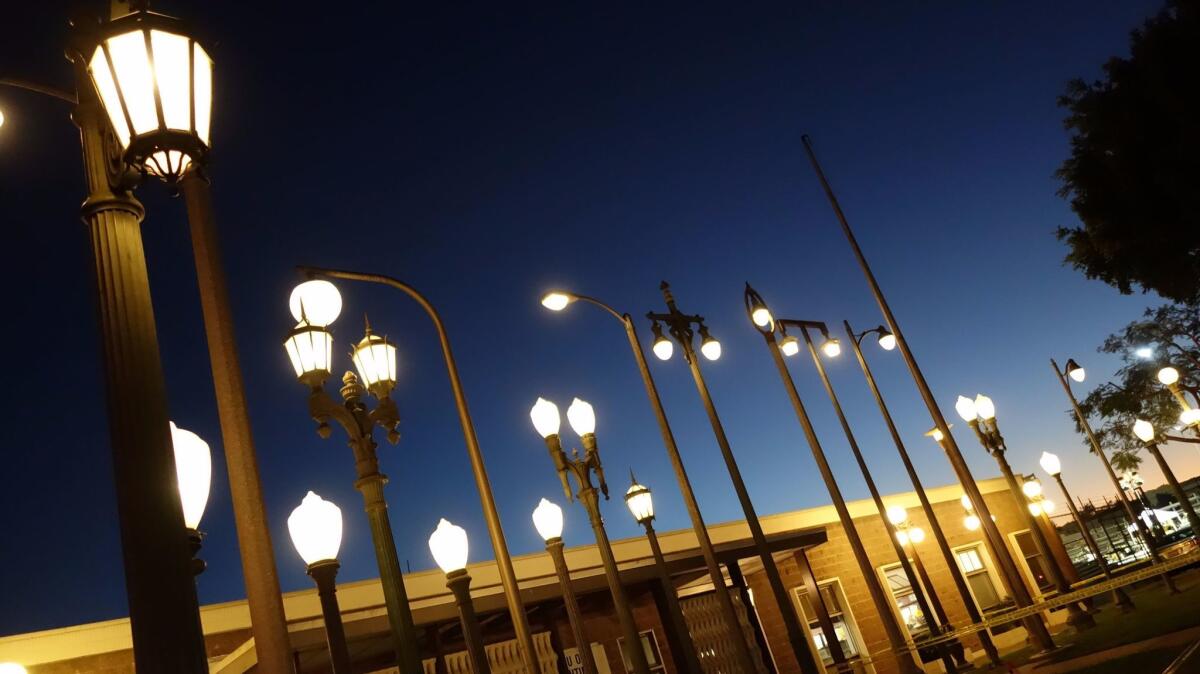
The streetlights stood for 24 years like a row of silent sentinels in the strip mall parking lot at the corner of Santa Monica Boulevard and Vermont Avenue in East Hollywood.
There were 25 of them, planted in a grassy median before a Staples office supply store, collectively representing seven decades of Los Angeles history, from 1925, when the city’s Bureau of Street Lighting was established, through 1992, when parts of the neighborhood went up in flames during the Los Angeles riots. The streetlights, installed by artist Sheila Klein and a crew of volunteers in 1993 — 15 years before Chris Burden erected “Urban Light” at the Los Angeles County Museum of Art — were intended as a healing gesture in the wake of that uprising.
Now they are gone.
Or at least they are gone from the grassy strip they have occupied for nearly a quarter-century.
Sometime before Thanksgiving, “Vermonica,” as the sculptural light installation is known, was removed and then reinstalled in a slightly different configuration before the Bureau of Street Lighting offices on Santa Monica Boulevard, two blocks east of the original location.
What’s the big deal?
Klein was never contacted about the move.
“It was totally out of the blue; there was no notification whatsoever,” says the artist, who now lives in Washington state. “This has been in the public realm for 24 years. It’s outrageous.”
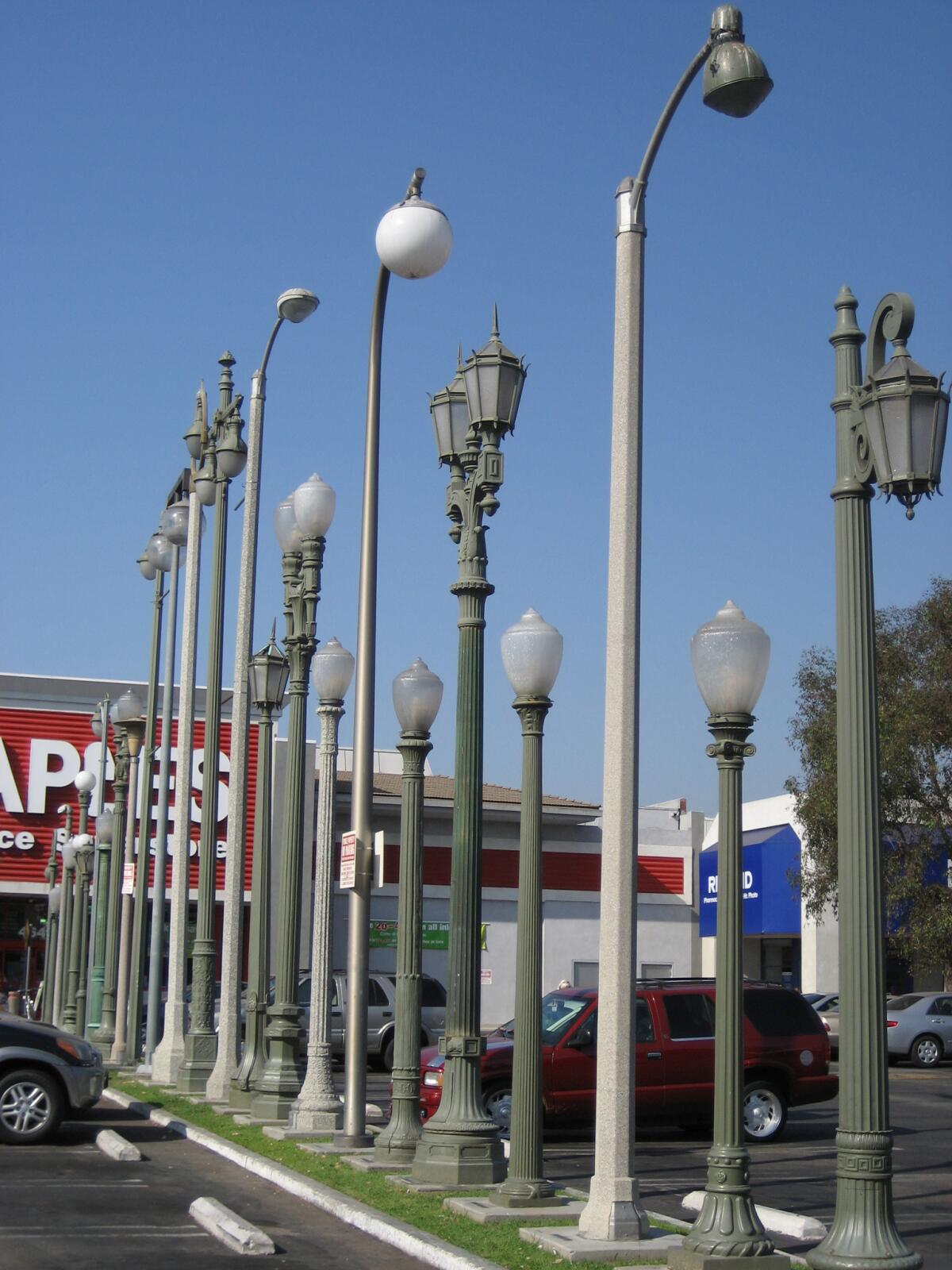
In a statement posted to the blog of Esotouric, the historic Los Angeles tour company, Klein said the removal of the work, in essence, represented its destruction.
“While the Bureau of Street Lighting put the piece on their property with the historic street lights in the order I designed,” she wrote, “this is not my piece and it is no longer ‘Vermonica.’”
Megan Hackney, assistant director at the Bureau of Street Lighting, says the move wasn’t intended to be permanent.
“We were recently contacted by the property management at that strip mall and we were told that [the lamps] needed to be removed — I think, because they are redesigning the parking lot or there will be construction going on there,” she says. “The timeline sped up because one day they started doing some work over there and they called and said, ‘We need to have two lights removed immediately.’ Our sense of urgency was to protect and preserve the streetlights so that they wouldn’t be damaged or removed by someone other than us.”
Hackney did not provide an explanation for why the artist wasn’t notified, but says the Department of Cultural Affairs has since been contacted and will coordinate with Klein to help determine the future of the work.
“We need to meet and we need to discuss options about what can be done,” says the department’s general manager, Danielle Brazell, who reached out to Klein after the removal.
Altering or destroying the work of an artist could violate the California Art Preservation Act, which aims to preserve “the integrity of cultural and artistic creations.”
But “Vermonica” occupies a legal gray area.
The piece was not commissioned by the city or any of its entities. Instead, its installation — in true Los Angeles fashion — was more DIY.
Klein received a small grant from the Department of Cultural Affairs to install the work and received the light posts on loan from the Bureau of Street Lighting. And she persuaded the property owner of what was then a small strip mall anchored by an electronics shop called Hollytron to provide the median in the parking lot as an installation site.
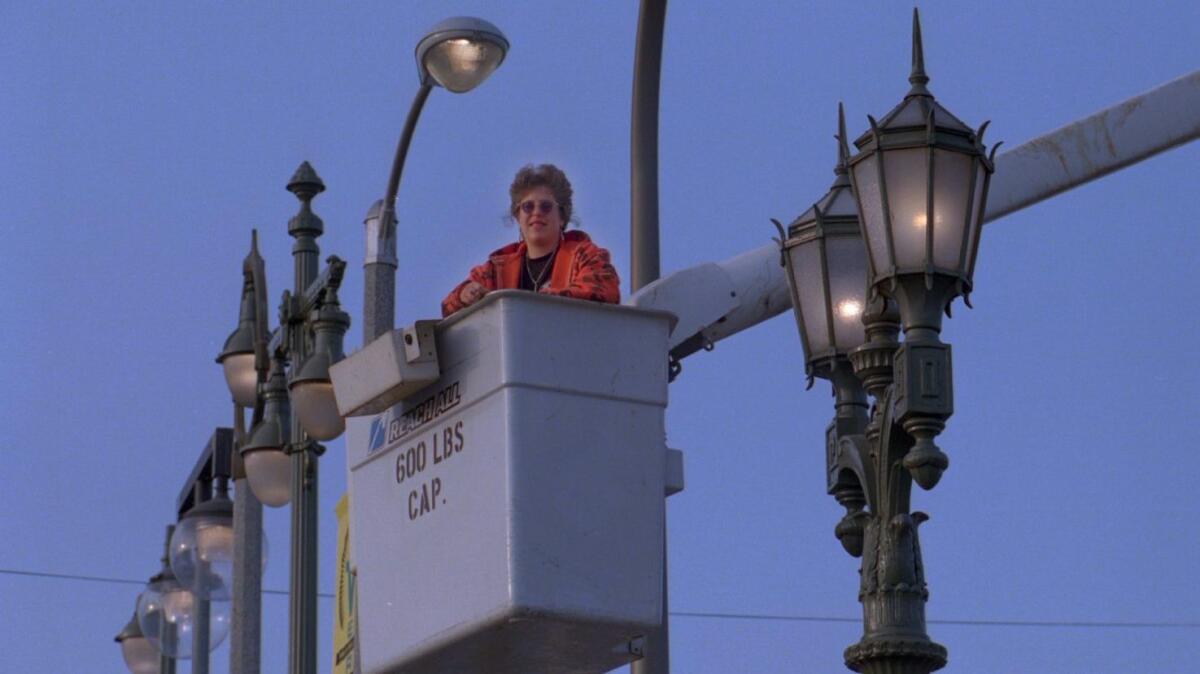
The piece was supposed to be temporary, lasting only a year. But thanks to its popularity, it lasted 24 — its ownership always an unresolved question.
Over the years, Klein says, there have been occasional discussions with the city about formalizing the work’s status (it was installed as a quasi-public work on private property) and finding a new location for it — preferably on public land.
But relocation, she insists, irrevocably changes the meaning of the work, a site-specific piece that emerged from an urge to mend the city.
“Originally, I had thought of a more pastoral site for the piece,” Klein says. “But after the riots, I thought it has to be right in this place where things had burned down. I remember driving by that strip mall and seeing the sign that said, ‘We are rebuilding!’ So I called the number on the sign and asked if I could put up the piece.
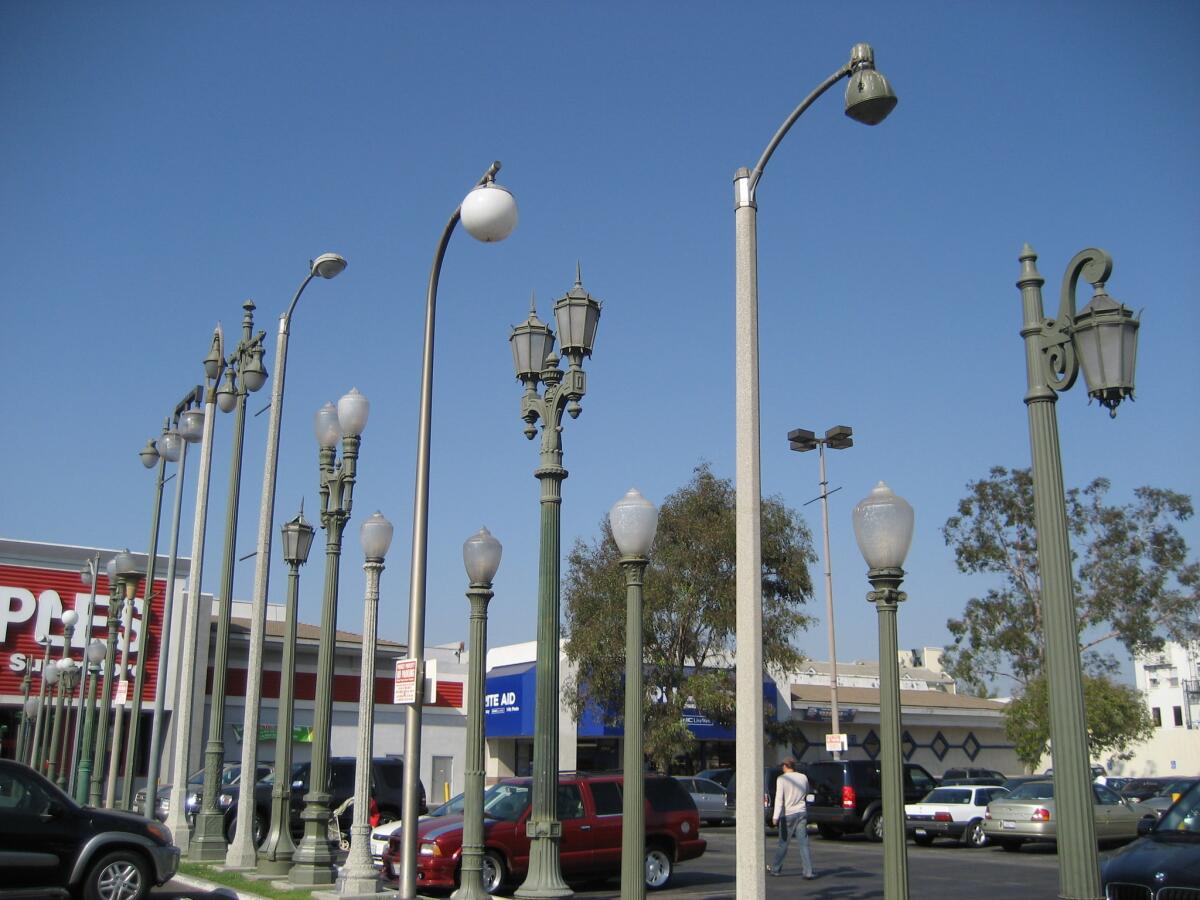
“This is a site-sensitive piece. Context is everything. Part of the piece is that it changes its context. It’s not some statue where you can say, ‘I’ll move it to another square.’”
Richard Schave, co-founder of Esotouric, says the work’s quotidian location gave the piece its beauty and its significance.
“It’s just hidden in this parking lot,” he says. “But it’s this parking lot that was one of those iconic scenes from the riots, with Korean store owners on the roof” protecting their property.
Brazell also notes its significance within the context of the Los Angeles art scene.
“This is an important artwork because it does predate Chris Burden’s ‘Urban Light,’” she says. “It was done by a woman artist — and, often, women artists have to operate outside of convention.”
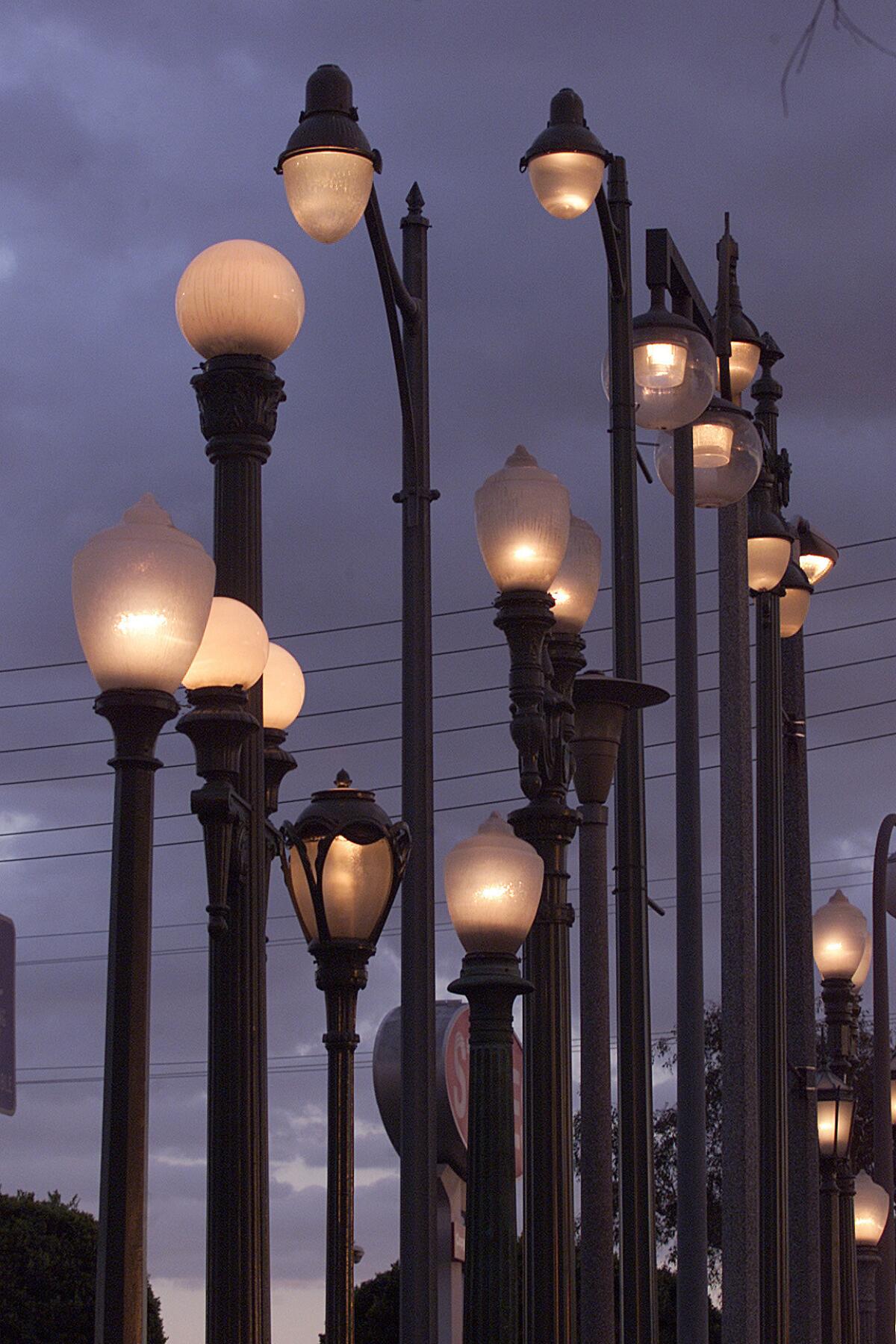
For Klein, the work was about bringing together elements from different areas and eras of the L.A. landscape — streetlights — and presenting them as a stirring “urban candelabra.”
“My hope is that the piece will be reinstated,” says Klein, who has numerous other public commissions around Los Angeles, including the sculptural design of the Hollywood and Highland Metro station. “This whole situation raises a lot of different conversations — like the things that aren’t landmarked but are still important to the nature of a city.”
Ultimately, the sculpture’s sudden relocation could rescue it from the gray area it currently inhabits.
“It puts the story forward,” she says. “Hopefully now it will be installed in the appropriate way.”
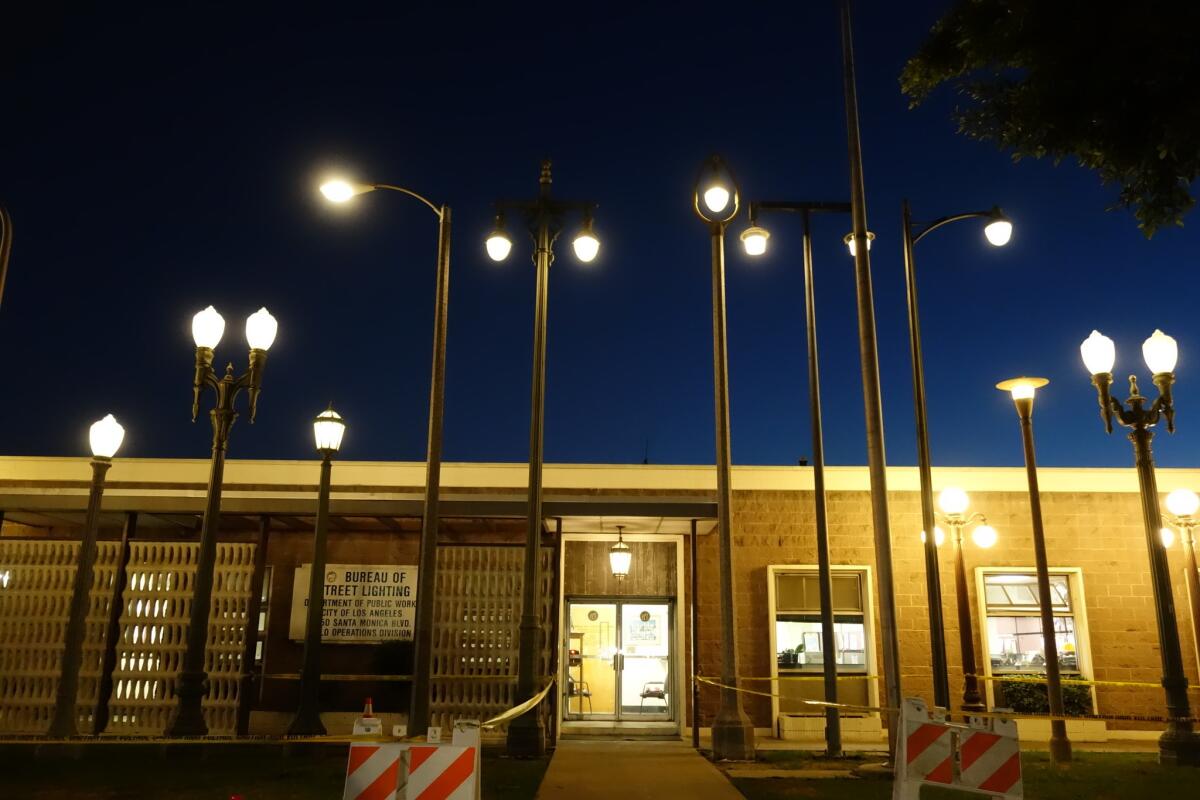
Sign up for our weekly Essential Arts & Culture newsletter »
ALSO
'Vermonica' Tells Story of Lighting the City
The 'whoa' moment and Mary Corse: The painter who toys with light is finally getting her due
The biggest entertainment stories
Get our big stories about Hollywood, film, television, music, arts, culture and more right in your inbox as soon as they publish.
You may occasionally receive promotional content from the Los Angeles Times.







